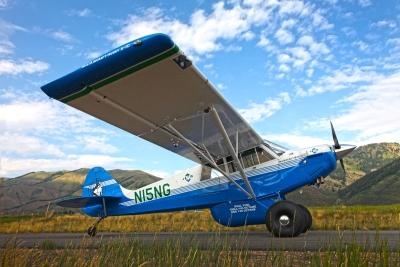
The Aviat Husky CNG, which flew more than 1,000 miles from Aviat’s headquarters in Afton, WY, to be at AirVenture, can be powered by CNG or 100LL aviation gasoline with the flip of a switch. It is a standard Aviat Husky A1-C that has been fitted with a CNG fuel tank in addition to its standard aviation gasoline tanks with a capacity of 50 gallons. The aircraft is powered by a 200 hp, four cylinder Lycoming aircraft engine with a cruise speed of 143 mph. The flight endurance at 65 percent power setting is approximately seven hours.
Greg Herrick, president of the Aviation Foundation of America approached Aviat’s president in early 2013 with the idea of building an aircraft to demonstrate the advantages natural gas can offer general aviation aircraft. “Among the many advantage of using CNG are fuel cost savings, cleaner burning fuel and no lead emissions,” said Greg Herrick, president of the Aviation Foundation of America. “I’m impressed with how Aviat readily agreed to tackle this project, working with a team of engineers and craftsmen within the aviation and natural gas industries. The result is a sophisticated solution which can be readily applied to a variety of piston powered aircraft.”
Compressed natural gas power is up to 80 percent less expensive than the national average of $6-per-gallon aviation gasoline. There is no lead in compressed natural gas, the presence of which is currently a significant issue with aviation gasoline. It is also a much cleaner burning fuel, reducing smog pollutants by 90 percent and reducing CO2 emissions by 30 percent. Engine oil remains significantly cleaner therefore improving engine life, while aircraft performance is enhanced as CNG typically burns 138 octane versus the current 100 octane of aviation gasoline.
“One aspect we’re particularly excited about is the opportunity to dramatically reduce the cost of learning to fly,” added Herrick. “If a flight school installs a simple CNG refueling station they can cut the cost for the student’s fuel, perhaps by thousands of dollars. And, the fuel is available where ever there is a natural gas line.” FMI: www.aviataircraft.com
